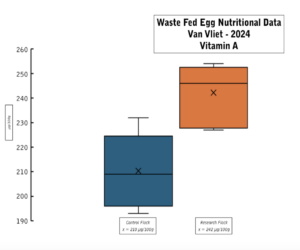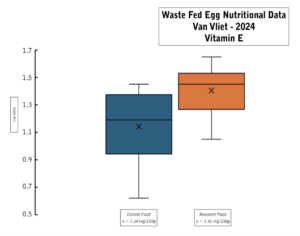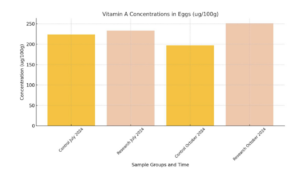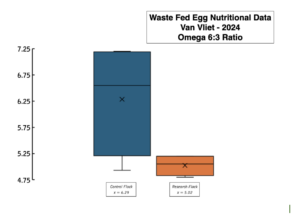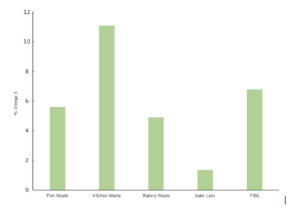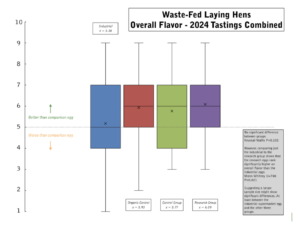Progress report for FLW24-013
Project Information
The Environmental Protection Agency estimates that the United States wastes the equivalent of 35% of its food supply each year, contributing substantially to the greenhouse gas emissions and other environmental impacts of waste disposal. Food waste is a significant obstacle to efficient use of limited agricultural resources, to improving food security, and to increasing the sustainability of our food systems. Despite recognition that feeding food waste to monogastric livestock presents a promising waste-prevention opportunity, and despite successful examples set by Japan and South Korea, the U.S. remains without the infrastructure, regulations, or guidance to encourage waste feeding to meaningfully impact the environmental and economic landscape. The use of food waste as animal feed presents a systems approach to waste reduction because it simultaneously: (1) decreases the environmental impacts of waste disposal and livestock feed production; (2) increases food security by liberating agricultural land from feed production in favor of diverse crops for human consumption; and (3) improves the economic efficiency of meat, egg, and dairy production by lowering feed costs and improving farm margins.
Practical guidance is necessary to enable farmers to capture the benefits of waste feeding at the local level by improving farm economics and local ecosystems. This project will: (1) test and optimize the feeding of diverse sources of food loss and waste to developing and finishing hogs and developing and mature laying hens in a diverse, pasture-based, rotationally grazed production system; and (2) develop a Waste-Feeder’s Manual, in conjunction with outreach efforts to stakeholders, containing practical guidance for sourcing and feeding regionally appropriate waste-based diets.
Research will be conducted at the Stone Barns Center for Food & Agriculture, with parallel and identical experimental and control hog and laying hen groups on one geographically separate partner farm. On each farm, using nutritional analysis and in consultation with an animal nutritionist, we will optimize experimental diets from locally sourced food loss and waste sources. Control groups will be fed a commercially-available, organic grain feed. We will also conduct sensory analyses, and additional nutritional analyses, of the meat and egg products of each animal group on each farm. Finally, we will demonstrate the benefits and trade-offs of feeding waste diets to each animal group by conducting a life cycle-style analysis of the economic, food loss and waste prevention, and GHG emission impacts of the optimal waste-fed system versus the organic grain-fed system. Using this data, and information learned from stakeholder outreach, we will produce an evidence-based training and technical assistance guide for producers and their communities. Additionally, we will explain our findings and encourage livestock farmers, chefs, policymakers, food businesses owners and community leaders to engage with each other at a Waste Feeding Conference to be held at the Stone Barns Center in year 3 of this project.
Through research and broadcast, our goal is to validate and democratize these food loss and waste feeding strategies and begin to shift cultural, market, and policy perceptions toward a deeper understanding of the value of waste-feeding.
Our objective is to research and broadcast best practices for optimizing food loss and waste (“FLW”) diets for hogs and laying hens to reduce on-farm, manufacturing, and pre-consumer restaurant and retail food waste in the Northeast region and beyond. This study will include economic and nutritional research to determine the benefits and trade-offs of an FLW diet for the economics of small farms, for environmental impacts, and for human nutrition. Research will be conducted at the Stone Barns Center for Food & Agriculture and replicated identically at one geographically separate partner farm. Specific project objectives are outlined in more detail below.
Objective 1:
Source and blend diets for hogs and laying hens to establish the optimal percentage and mix of FLW from our region that meets the dietary needs of each animal group. We will:
- Source and gather diverse FLW from multiple stages in our local food chain, including on-farm waste (fruit and vegetable waste), manufacturing waste (spent brewer’s grains), and pre-consumer restaurant and retail waste (restaurant and grocery store fruit, vegetable, fish, and dairy waste);
- Analyze the composite nutritional composition of each FLW source at regular intervals over the life of the project;
- Analyze the nutritional composition of commercially-available organic grain feeds fed to each control group; and
- Engage an animal nutritionist to assist in blending complete FLW diets meeting all dietary needs of hogs and laying hens.
Objective 2: Measure the effects of feeding the optimized FLW diet on both production and animal health and welfare for pastured hogs and pastured laying hens. We will:
- Feed an FLW diet to a population of pastured hogs at developing and finishing stages, alongside a control population fed a commercially available, organic, grain-based feed;
- Record and analyze health scores of both populations of hogs at regular intervals;
- Record and analyze the average daily weight gain of both populations of hogs;
- Feed an FLW diet to a population of pastured laying hens in developing and mature stages, with increasing FLW percentages at regular intervals, alongside a control population fed a commercially available, organic, grain-based feed;
- Record and analyze health scores of both populations of laying hens at regular intervals;
and - Record and analyze the hen-day egg production of both populations of laying hens.
Objective 3: Demonstrate the economic and environmental benefits and trade-offs of feeding FLW diets to each animal group for the economics of small farms. We will:
- Analyze the amount of FLW diverted to animal feed, by source, over the life of the study;
- Determine the cost, labor hours, and incidental expenses of sourcing, gathering, and blending effective FLW diets;
- Record the cost of commercially available, organic, grain-based feed fed to each control group;
and - Compare potential greenhouse gas footprint of FLW diets versus the conventional.
Objective 4: Demonstrate that not only is it possible to meet the dietary needs of hogs and laying hens using regionally sourced FLW-based diets, but that such a diet produces high quality pork and egg products for human consumption. We will:
- Evaluate the carcass characteristics of hogs slaughtered from both populations;
- Conduct blind sensory analysis panels of pork harvested from both hog populations, including aroma and taste characteristics;
- Analyze the nutritional composition of pork harvested from both hog populations, including fatty acid profiles, macronutrient composition, micronutrient composition, and phytonutrients;
- Conduct blind sensory analysis panels of eggs harvested from both laying hen populations at each FLW interval, including aroma and taste characteristics;
and - Analyze the nutritional composition of eggs harvested from both laying hen populations at each FLW interval, including fatty acid profiles, macronutrient composition, micronutrient composition, and phytonutrients.
Objective 5: Utilize data
and information learned from the above objectives to develop a “Waste-Feeders’ Manual” for complete FLW diet sourcing and feeding in the Northeast. While the manual will be particularly applicable to the Northeast region, our goal is to establish and recommend best practices that can be easily adapted to other regions of the country. We will:
- Conduct a survey of Northeast
pork and egg producers to determine, among other things, industry demographics, availability of FLW sources, and the desire and need for specific FLW-feeding strategies and guidance to be addressed in the Manual; and Host a Waste-Feeding Conference for hog and laying hen farmers, chefs, butchers, policymakers, and other stakeholders to present the results of this project and glean additional stakeholder priorities for inclusion in the Manual.
Objective 6: Broadcast project progress through the Stone Barns Centers’s (“SBC”) regular media channels, including regular posting to SBC social media and through SBC’s newsletter, and through SBC’s regular in-person programming offered to SBC members and the general public.
Objective 7:
Complete and submit at least two scientific manuscripts sharing the results of these studies. One paper will focus on the results of nutrient analyses of the FLW feed streams versus the nutrient analysis of the organic grain ration. At least one additional paper will focus on the nutritional comparison of the final products raised on the optimized FLW diets versus those raised on the organic grain rations. It is possible that this paper may be split into two, one for each animal group.
Cooperators
- (Researcher)
- - Producer (Researcher)
Research
Our method of reducing food loss and waste (FLW) is by feeding FLW to our omnivorous livestock groups (e.g., hogs and laying hens). We have been waste feeding in this manner on our farm for more than ten years. With the additional resources provided by this grant, we are now able to conduct detailed analyses of the nutritional content of the FLW we are collecting and feeding and the impact this feed has on the nutrition of the resulting pork and eggs, and we will develop comprehensive resources for farmers who wish to begin similar feeding programs. The FLW reduction will begin on our farm, and in our community, but through research, broadcast, and education, we aim to spread that reduction throughout our region by increased uptake of the method.
During this project, we are collecting and feeding FLW from the following sources:
- Fermented Brewers’ Grain - We collect totes of spent grain that have been inoculated with a lactobacillus culture, which we provide, from four local breweries on a weekly basis. This grain is fed to both hog and hen animal groups.
- Farm Loss - Several times per week, we collect fruit and vegetable loss from our farm, which we feed to both animal groups.
- Restaurant Waste - Several times per week, we collect pre-consumer fruit, vegetable, grain, bread, and fish waste from our onsite restaurant partner, Blue Hill at Stone Barns (Blue Hill). Fish waste is fed only to hens. All other Restaurant Waste is fed to both animal groups. All post-consumer waste is composted and will not be counted toward the FLW diversion totals reported here.
- Retail Dairy Waste - On a weekly basis, we collect past sell-by date dairy products from one local grocery store, C-Town, in Tarrytown, NY. Retail dairy waste is fed to both animal groups.
This approach reduces community, farm, and restaurant FLW, returns that FLW back to the human food chain via a hog or hen, creates improved nutrition for our livestock, creates improved nutrition in pork and eggs for human consumption, and improves farm economics.
Our research methodology falls into four major categories: FLW characterization and testing; animal production and health measurement; product taste and nutrition testing; and life cycle analyses. FLW characterization will involve collecting data on the availability and viability of suitable FLW sources, as well as estimates of how much usable material a farmer can reasonably expect from those sources. Additionally we will be testing the nutritional profiles of the various FLW streams and working with our consulting animal nutritionist to better understand how to provide a balanced diet to omnivores, while also taking advantage of unique FLW source benefits such as increased Omega 3 fatty acids or antioxidant compounds in particular FLW categories. Animal production and health measurement will involve various measures of animal health and wellbeing to ensure animals are healthy and thriving on the FLW diet, as well as measures of production such as weight gain and carcass grading in hogs, and lay rate in the laying hens. Product taste and nutrition will involve in-house comparative blind taste testing as well as laboratory testing of key nutritional compounds such as fatty acids, vitamins, antioxidants, and phenolics. Finally, we will be conducting a comprehensive life cycle analysis (LCA) to determine not only the impact on greenhouse gas footprints, but also the holistic environmental and economic impacts.
Because the pasturing and waste-feeding season has not yet begun with the research and control animal groups that will be a part of this study, data collection to date has been limited. Laying hens just arrived on the property and hogs are not slated to arrive for several months (see section regarding milestones for more information on livestock acquisition). However, in accordance with our timeline, FLW sampling has begun so that we develop the nutritional profile of our FLW sources across the calendar year.
To date, we have conducted three sampling events of all available FLW sources from Stone Barns Center for Food & Agriculture (SBC), C-Town, and our brewery partners. This includes fermented brewer’s grain, fish, kitchen waste, dairy, bakery waste, and crops waste. The first two sampling events have been received at the laboratory facilities and analysis is pending. The third sampling event is being frozen in our -80C laboratory freezer and prepped for shipping. Partner farm analysis has not yet begun, pending the completion of relevant Standard Operating Procedures (SOPs) and the creation of additional data collection tools, but is ready to begin in April. Singing Pastures Farm will be able to double up its FLW sampling in some months to ensure we still have 12 waste feed testing events for the year.
- Farm
- Retail/grocery
- Restaurant
- Feed Animals
It is estimated that the United States wastes 30-40% of its food supply annually. At the same time, American Farmers grew 91.5 million acres of corn in 2024, 40% of which is destined to feed livestock. Recovery of FLW before it hits the landfill for use in feeding omnivorous livestock not only has the potential to recycle wasted food into the human food chain, but has the potential for multiple ripple effects across the food system, including: (1) reducing our food system’s reliance on large-scale, environmentally detrimental feed crop production; (2) reducing farmers’ costs of production; (3) unlocking tens of millions of acres of American farmland for the production of more diverse crop rotations for human food production; and (4) improving regional food security in the face of a changing climate.
During our project, we are: collecting FLW from farm, restaurant, retail, and manufacturing sites; measuring the nutrition of these waste streams; feeding that FLW to hogs and laying hens; measuring the effect of the waste-based diets on animal health and productivity; measuring the nutrition of the resulting pork and eggs; and conducting life cycle analyses to understand the greenhouse gas implications of FLW feeding, as well as the economic implications for farm operations.
To date, we have not begun waste-feeding any of the experimental or control animal groups because we are still too early in the pasturing/grazing season or are awaiting arrival of the animals. We have collected three waste feed samples so far this year for preliminary nutritional analysis, but, as described above, results of those analyses are pending.
However, in collaboration with our co-Principal Investigator, Dr. Stephan van Vliet, we conducted preliminary nutritional analyses of FLW streams and waste-fed eggs (compared to our own control flock and multiple commercially available controls) collected during our preliminary experimentation before the start of this grant period. Results of these preliminary analyses from Dr. van Vliet’s lab are striking.
Our research (waste-fed) flock showed higher average Vitamin A & E levels compared to our control flock, which was fed the same high quality, nutritionally complete grain feed that we will use to feed our control flock during the grant period.
Even more striking, is the fact that, while the research flock eggs gained Vitamin A over time, the control flock eggs lost Vitamin A over the same time period even though they were fed what would presumably be a more stable and consistent feed.
Our research flock also showed a substantially lower Omega 6:3 fatty acid ratio than our control flock. A lower Omega 6:3 ratio has been shown to promote better health outcomes and many nutritionists consider a ratio between 4:1 and 1:4 to be the ideal range in an overall diet for positive human health outcomes. Our research flock eggs tested thus far fall close to this ideal range (average of ~5:1).
Interestingly, nutritional analysis of the various waste streams suggest that it could be the kitchen waste that is contributing the most Omega 3 fatty acids to our hens’ diet.
Finally, in our blind sensory analyses, there was not a statistically significant difference in ratings of overall flavor between our research flock, our control flock, and our commercially available, high quality, pastured, organic control. This suggests, preliminarily, that waste-feeding has at least no detrimental effect on quality and flavor, while it improves nutrition.
So far, we have collected 11,959.57 pounds of FLW, identified in the below graph by type. This total does not include roughly 250 pounds of collected material that was incorrectly sorted and not suitable either for feeding or composting and was diverted to garbage.
Of the total collected, 1,674.32 pounds have been fed to livestock (hogs and laying hens). Although we have not yet begun the waste-feeding of the exprimental or control animal groups that will be a part of this study, this amount was fed to the last remaining hogs and hens from our 2024 animal groups.
Additionally, 9,190.25 pounds of FLW has been composted to date. As shown in the below graph, most of this total is fermented brewers' grain. The reason that amount of composted material is so high is because of gap in time between the slaughter of our 2024 animal groups and the acquisition of our experimental and control animal groups for this study. It will not be the standard practice to compost this high a percentage of material throughout the grant period.
Roughly 30 pounds of FLW has been devoted to our three samplings events and has either been sent to the appropriate laboratories for analysis, or is in our -80C laboratory freezer awaiting shipment. The remainder of the collected FLW that has not been either composted or fed has been stored for later use.
- Grains
- Produce
- Other
The percentages of FLW collected and diverted are as follows:
- 85.5% Grains, including;
- 83.2% Fermented Brewers' Grain; and
- 2.3% Bakery Waste;
- 14.31% Produce, including;
- 5.11% Kitchen Waste; and
- 9.2% Crops Waste; and
- 0.19% Other (Fish Waste).
A number of supply chain stakeholder linkages have been strengthened by this project. Our partner restaurant, Blue Hill, has participated in the FLW sampling process and is assisting in the development of relevant SOPs and staff training.
C-Town, our local grocery store, is providing past sell-by date dairy products for analysis and will continue to do the same once hog and hen groups begin waste feeding.
We are continuing relationships with four local breweries to source spent grains from their brewing processes that they are inoculating with lactobacillus culture prior to collection.
Our partner-farmer, John Arbuckle, is ready to replicate our research on his farm and collect data in accordance with the SOPs we have shared with him. He has also begun to bring the necessary stock onto the SP farm.
Finally, as described in more detail below, we also held an informational call with Alicia LaPorte (Senior Communications and Impact Director at Niman Ranch) and Keri McCliman (Vice President of Communications at Perdue Premium Meat Company) to describe our waste feeding research and practices and to explore Niman Ranch’s potential willingness to waste feed on a trial farm, or to assist our practitioner survey process via its network of more than 600 small, family run farms and ranches.
Although we have not yet begun the pasturing and waste feeding season for our experimental and control animal groups, we have made significant progress toward project objectives and research goals.
DATA COLLECTION APPS
We have developed several Survey123 (ArcGIS)-based applications for use by Stone Barns and comparable web-based Survey123 applications for our partner farm, Singing Pastures, for logging the collection and distribution of all FLW by source, type, weight, and destination (e.g., compost or feeding) and collecting animal health and production data.
RESEARCH STANDARD OPERATING PROCEDURES
In the time since our project began, we have developed the following SOPs for use by Stone Barns:
- Restaurant FLW Sorting - This document outlines the protocols for identifying and sorting livestock-edible FLW by Blue Hill at Stone Barns kitchen and front of house teams.
- Dairy Waste Collection - This document outlines the protocols for collecting and sorting dairy waste from the C-Town grocery store in Tarrytown, New York.
- Farm Loss Collection - This document outlines the protocols for collecting and sorting on farm food loss from our Greenhouse and Field production teams.
- Fermented Brewer’s Grain Sourcing & Preparation - This document specifically outlines the protocols for sourcing and preparation (e.g., inoculation and storage) of fermented brewer’s grain for feeding.
- Cider Mill Collection - This document outlines the protocols for collecting and sorting waste from Thompson’s Cider Mill in Croton-on-Hudson, New York.
- FLW Collection & Feeding App - This document outlines the procedures for logging FLW collection and feeding events through our app.
- FLW Compositing & Sampling - This document outlines the procedures for creating and handling composite FLW samples.
- FLW Sample Storage & Shipping - This document outlines the protocols for storing and shipping FLW samples to the appropriate laboratories, including to our Co-PI, Dr. Stephan van Vliet at Utah State University, for analysis.
- Animal Care & Management (Hogs & Hens) - This document outlines the all protocols for animal care and performing regular animal welfare checks.
- Animal Wellness Check App (Hogs & Hens) - This document outlines the procedures for logging animal wellness scores, both for hogs and hens, through our app.
- Egg Sampling, Storing & Shipping - This document outlines the procedures for creating and handling composite egg samples and shipping those samples to Dr. van Vliet for analysis.
- Pork Sampling, Storing & Shipping - This document outlines the procedures for creating and handling pork samples and shipping those samples to Dr. van Vliet for analysis.
- Egg Blind Sensory Analyses - This document will outline the protocols for preparing and conducting blind sensory analyses of eggs from each hen group.
- Pork Blind Sensory Analyses - This document will outline the protocols for preparing and conducting blind sensory analyses of pork from each hog group.
We have also developed the following SOPs for use by our partner farm, Singing Pastures:
- Animal Wellness Check App (Hogs & Hens) - This document outlines the procedures for Singing Pastures to log animal wellness scores, both for hogs and hens, through our app.
- FLW Collection & Feeding App - This document outlines the procedures for Singing Pastures to log FLW collection and feeding events through our app.
- FLW Compositing & Sampling - This document outlines the procedures for Singing Pastures to create composite FLW samples.
- FLW Sample Storage & Shipping - This document outlines the protocols for Singing Pastures to store and ship FLW samples to the appropriate laboratories, including to our Co-PI, Dr. Stephan van Vliet at Utah State University, for analysis.
- Egg Sampling - This document outlines the procedures for Singing Pastures to create composite egg samples for analysis.
- Egg Sample Storing & Shipping - This document outlines the procedures for Singing Pastures to store and ship composite egg samples to Dr. van Vliet for analysis.
- Pork Shipping - This document outlines the procedures for Singing Pastures to ship pork samples to Dr. van Vliet for analysis.
EQUIPMENT ACQUIRED
We have confirmed that we possess the necessary scales, or have acquired the necessary scales where needed, for weighing all collected and fed FLW and for weighing hogs from both hog groups, on both farms, to track growth rates. We have also acquired DSM Yolk Fans for use during egg sensory analyses.
DATA COLLECTION
We collected and processed samples of all FLW sources that will be fed to any Stone Barns animal group three times in 2025. Samples have been sent to Dairy One Forage Lab, Cumberland Valley Analytical Services (amino acid testing), and Dr. van Vliet. Test results are currently pending.
In order to establish baseline data, we also collected and sent for analysis pork and egg samples from last year’s FLW feeding program. These samples are not covered under the grant and the testing has been paid for by Stone Barns. However, the data provides a useful preliminary understanding of nutritional trends going into the 2025 livestock season. We received results from the egg testing last fall, some of which are discussed above. Pork samples were submitted with the January and February waste feed samples and results are still pending.
LIVESTOCK ACQUISITION
The timing of livestock acquisition has changed from our projected timeline due to a number of factors. All necessary laying hens have been acquired and brought to Stone Barns and Singing Pastures slightly ahead of schedule. This was necessary because of increasing pressure on egg and bird suppliers from the rapid spread and severity of the current avian influenza outbreak. In order to ensure that we could acquire the full amount of pullets required for the study, in a healthy state, we needed to move up our timeline. Our partner farmer, John Arbuckle, collected hens for his two groups from Stone Barns and transported them to Singing Pastures on March 29, 2025.
The uncertainty surrounding this outbreak and our ability to acquire the necessary hens on an acceptable timeline has been our greatest challenge to date. There are identified cases of avian influenza in poultry and wild birds in Westchester County, NY. So far, our birds remain healthy, but we are developing our organizational procedures related to the handling, movement, and protection of poultry and will monitor the situation carefully.
Conversely, our acquisition of the necessary hogs for this study has been delayed. The breeder from whom we will acquire piglets for this study (the same breeder who has supplied piglets to Stone Barns for our prior waste-feeding regimes) was forced to breed our piglets later than expected because of a delay in his ability to acquire an adequate boar for siring. Our hogs were initially scheduled to arrive on farm as weaning piglets in February, with estimated finishing times in Fall 2025. Our piglets will be born next month, in April, and arrive on farm in June, with estimated finishing times from October through December 2025.
While the timing of these acquisitions will necessarily require the adjustment of some of the sampling and sensory analysis timelines, the long-term timeline of this project will not be affected.
CONSULTING NUTRITIONIST
We engaged our consulting nutritionist, Jeff Mattocks, who will review FLW nutritional analyses, animal health check data, and lay rate and weight gain data and will advise concerning appropriate FLW feeding ratios and methods throughout the life of our project. Jeff is a farmer, author and livestock nutritionist who is considered in the industry to be one of America’s premier poultry nutritionists. He has begun to issue preliminary diet formulations for the early rounds of waste feeding for review and feedback from our team.
LIFE CYCLE ANALYSIS (LCA) AND ECONOMIC ANALYSES
Finally, a subgroup of the team has met several times to produce a comprehensive list of tasks for the LCA, economic analyses, and surveys needed for this project and production of the waste feed manual. This comprehensive list has been shared with the larger working group for comment and suggestions.
We have also onboarded a Columbia University senior thesis student to help with the laying hen LCA analysis. This individual has already compiled an extensive list of Northeast breweries and microbreweries in preparation for sending surveys to brewers to assess current practices and brewer attitudes towards participating in the fermentation of spent grains for an adopting farmer.
Education
Our project will engage in a combination of public and directed stakeholder engagement and outreach. Specifically, public outreach will include a combination of: tours of our farming and culinary innovation spaces that are open to the public; highlighting our work during our Research Showcase case series, which presents our research in the style of a science fair to members of the public; Stone Barns member-only programming like Member Thursday, a behind-the-scenes look at our ongoing research projects; and by serving the eggs and pork that result from our waste-feeding research to the public at the Blue Hill restaurant and in our Stone Barns Cafeteria.
To date, we have included an examination of our waste-feeding research in two Research Showcases (attended by 130 and 175 people respectively), and have highlighted the research by visiting our hogs or laying hens on 24 public tours which average roughly 20 participants per tour. The Research Showcases also included the opportunity to taste waste-fed pork charcuterie and waste-fed eggs. We also highlighted our research at a dinner event held in collaboration with Food Tank during last year’s Climate Week NYC.
Our targeted stakeholder outreach will kick off in 2026 with a broad farmer survey of Northeast pork and egg producers. In the third year of our project, 2027, we will host a waste-feeding conference at Stone Barns for a diverse set of stakeholders to present our research and will develop a practical manual for on-farm waste feeding.
Lastly, in collaboration with Dr. van Vliet, we will also draft one or more manuscripts for publication in appropriate open-source academic journals.
Educational & Outreach Activities
Participation summary:
During the first 5 months of our project, we have given weekly Explore Tours of Stone Barns farming spaces and Blue Hill’s culinary innovation spaces. These tours are open to the public. During an average of one tour per week, we led the tour group to visit our waste-fed hogs or hens (though these hogs are the end of last year’s team and flock and are not a part of this grant). During these tours, we explain the waste-feeding process and introduce guests to our project.
Last year, we hosted two Open Houses, which are full days of public programming, including a farm market, Explore Tours, culinary demonstrations, and a Research Showcase. The Research Showcase is a science-fair style exploration of ongoing research projects here at Stone Barns. During each Research Showcase, we devoted a station to present our waste-feeding project, along with preliminary results and data from last year’s laying hens, and tastes of our waste-fed eggs and charcuterie made with our waste-fed pork.
Last fall, we hosted a joint fundraising dinner with Food Tank during Climate Week NYC. The menu included waste-fed pork and guests were introduced to our project by way of a short presentation from a Stone Barns farmer and a Blue Hill chef to introduce the course.
One of the guests at the Food Tank dinner, Keri McCliman from Perdue Premium Meat Company and Niman Ranch, asked to host a follow up call with Alicia LaPorte, Senior Communications and Impact Director at Niman Ranch, to learn more about our waste-feeding process and our research project. In February 2025, we had an initial call to describe the project, address concerns around waste-feeding, and discuss the possibility of Niman experimenting with waste-feeding on their trial farm, or potentially assisting with survey dissemination among its network of small, family farms and ranches.
Project Outcomes
Although our data collection efforts under this grant have only just begun, our initial results from preliminary experimentation before the grant period show promise. In the short term, we have diverted a relatively large amount of FLW from disposal in a short period of time and are beginning to expand understanding of the benefits of feeding FLW to livestock among practitioners and the general public alike. We are encouraged that more data will validate FLW feeding strategies as an efficient farming strategy that produces better environmental outcomes, better health outcomes, and improved farm economies, and that this validation will aid in the spread and adoption of this strategy for reducing FLW.
Given that the research and data collection phase of our project is only just beginning, it is too early to make concrete recommendations. At this time next year we will have much more data from which to make recommendations of this sort.
